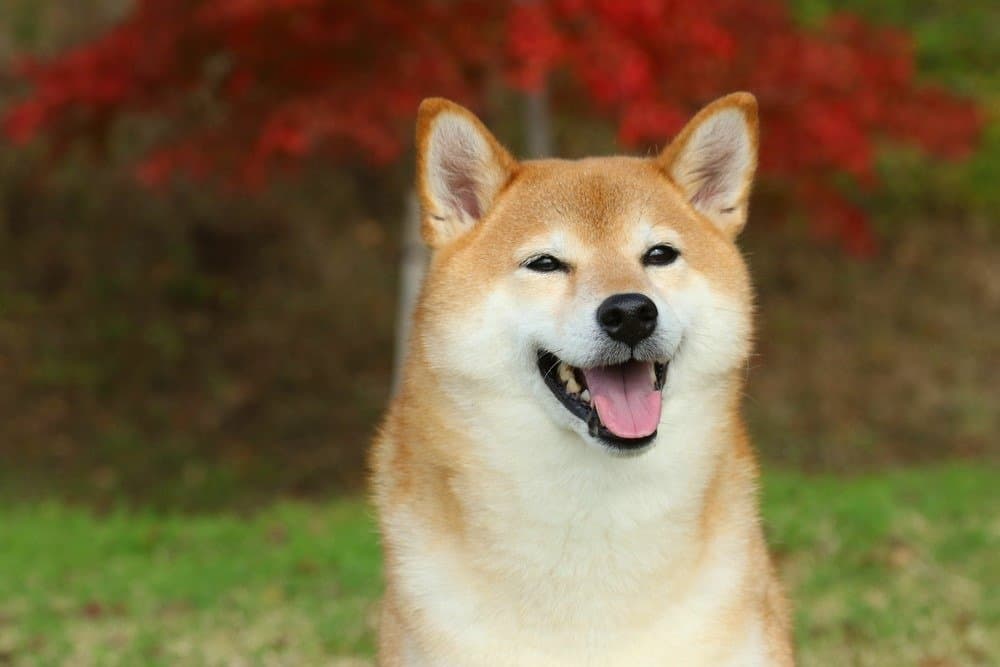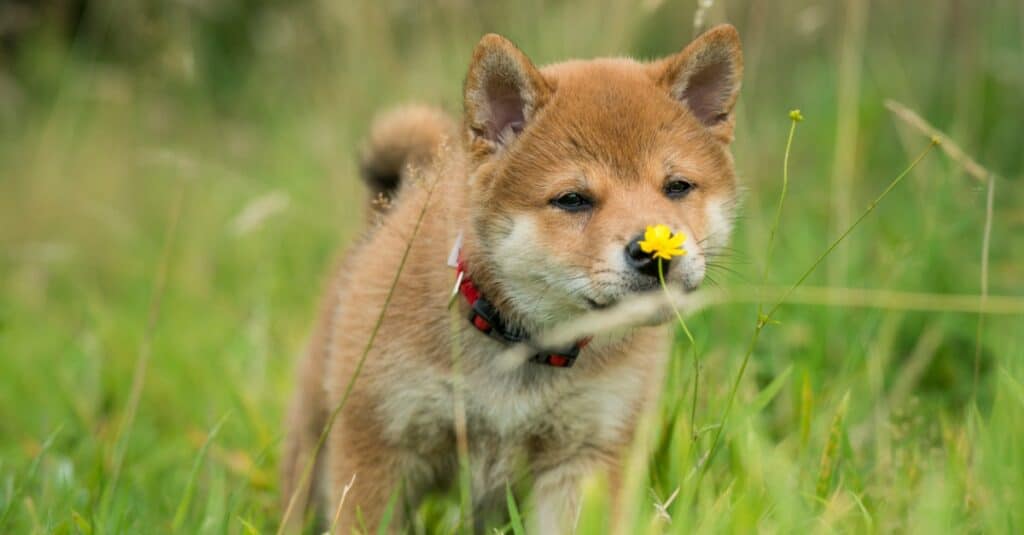The Shiba Inu is a small to medium spitz dog originating in Japan. Its name literally translates to “brushwood dog.” As their muscular, compact bodies make them excellent athletes, hunters once used these dogs to help take down prey. Today, many people worldwide consider this breed to be an ideal companion dog with its devoted and outgoing disposition. But before bringing one home, you’ll want to know: do Shiba Inus shed? And if they do, how much?
Do Shiba Inus Shed?

Rin Seiko/Shutterstock.com
Shiba Inus shed moderately throughout the year with heavier seasonal shedding. Unfortunately for dog lovers with allergies, this breed is not hypoallergenic. If you struggle with allergies, consider other breeds such as the poodle, Bichon Frise, or Havanese.
Why aren’t Shibas hypoallergenic? The answer has to do with how much they shed and, by extension, how much dander they release into the air. Dander (flakes of dead skin) is the primary cause of pet allergies. Dogs that shed a lot release more dander. Keep in mind that hypoallergenic dogs (like most poodle mixes) are not guaranteed not to trigger allergies; they are simply much less likely to do so than other types of dogs.
How Much Do Shiba Inus Shed?
Shiba Inus shed moderately most of the year. Though their fur is relatively short, owners can expect to clean up after their Shiba regularly. Like most other double-coated dogs, this breed goes through a period of extremely heavy shedding twice a year. Experts call this “blowing their coat.”
Shibas blow their coats when the temperature begins to change, typically sometime in spring and again in fall. This helps them regulate their body temperature by getting rid of their winter coats as the weather warms and taking on heavier coats as the weather cools. This can be a frustrating time for owners as they struggle to keep up with the clumps and tufts of fur lying around the house, but it’s necessary and natural.
Do Shiba Inus Have Hair or Fur?

iStock.com/Kurt Pas
Shibas have fur, not hair. Though both are made of keratin, they behave differently when it comes to shedding. See below for three ways having fur affects Shibas.
Shedding
The biggest predictor of shedding in a dog isn’t the length of its hair or fur, it’s the length of the hair or fur’s growth cycle. Hair has a longer growth cycle on average than fur. This means it grows to greater lengths before falling out to make room for new follicles. Fur, on the other hand, has a shorter growth cycle, replacing itself more frequently. This means more loose fur around the house. Like most fur-bearing dogs, Shibas are moderate to heavy shedders.
Layers
Fur-bearing dogs like Shibas are typically double-coated, meaning they have two layers of fur instead of just one layer of hair. When they shed, it’s mostly the undercoat they lose, especially when they blow their coat. The underlayer (ground hair) is soft and insulating while the outer layer (guard hair) is coarser and stiffer. True to its name, guard hair protects the ground hair from damage and moisture.
Texture
Dog hair is softer and finer than dog fur. The fur of most Shibas is coarse and rough to the touch, at least on the surface. This is common in working dogs, who often needed to brave harsh outdoor conditions and thus needed a more robust coat.
Grooming a Shiba Inu
Owners should brush their Shiba Inus once every two weeks during periods of lighter shedding. When it comes time for them to blow their coats, owners should increase the frequency of their brushing sessions to at least once a week. The best kind of brush for a Shiba is a slicker brush, which is a type of pin brush that helps detangle and get rid of loose hairs. Some owners like to follow this up with a steel comb or a de-shedding tool.
As for bathing, a bath once every four to six weeks should be sufficient. Be careful not to bathe your dog too frequently or you risk stripping their skin of natural oils. If you find their skin is dry or sensitive, consider switching to a gentler formula like an oatmeal-based shampoo.
Because their fur is generally easy to manage and doesn’t need trimming, you may not need to bring your Shiba to a professional groomer on a regular basis. One thing you should never do is shave your Shiba Inu. Though it may be tempting to reduce shedding, it will actually cause more shedding in the long run as the fur grows in thicker. Worse, you strip your dog of its natural system for regulating its body temperature.
How to Reduce Shedding
There are a number of ways to safely and effectively reduce shedding in your Shiba Inu. See the suggestions below for products that will help you in your perennial battle against excess fur.
- Brushing: Brushing your dog is not only necessary for their health, but it’s a great way to get ahead of the shedding problem. The right brush can remove dead, loose hairs before they have a chance to get on your floor or furniture.
- De-shedding brush: The experts have created brushes to help owners tackle shedding. See this article for the best de-shedding dog brushes on the market.
- Bathing: A good bath removes dead hair in addition to a pre-bath brushing. Try massaging your dog while they’re wet to loosen hair follicles.
- De-shedding shampoo: Some shampoos actually help reduce the amount of fur dogs lose. Try one of the best de-shedding dog shampoos available right now.
- High-quality dog food: Besides the other usual options, you can try changing your dog’s diet to control shedding. Check out this article for a list of the best dog foods for shedding.
Conclusion
Shiba Inus make loyal, affectionate companions and alert watchdogs. However, they also shed quite a bit. If you’re planning to get one of these dogs as a pet, you might want to consider purchasing a highly-rated vacuum for pet hair.
Up Next:
The post Do Shiba Inus Shed? appeared first on AZ Animals.
from Animal News, Facts, Rankings, and More! - AZ Animals https://ift.tt/8nj3KzX